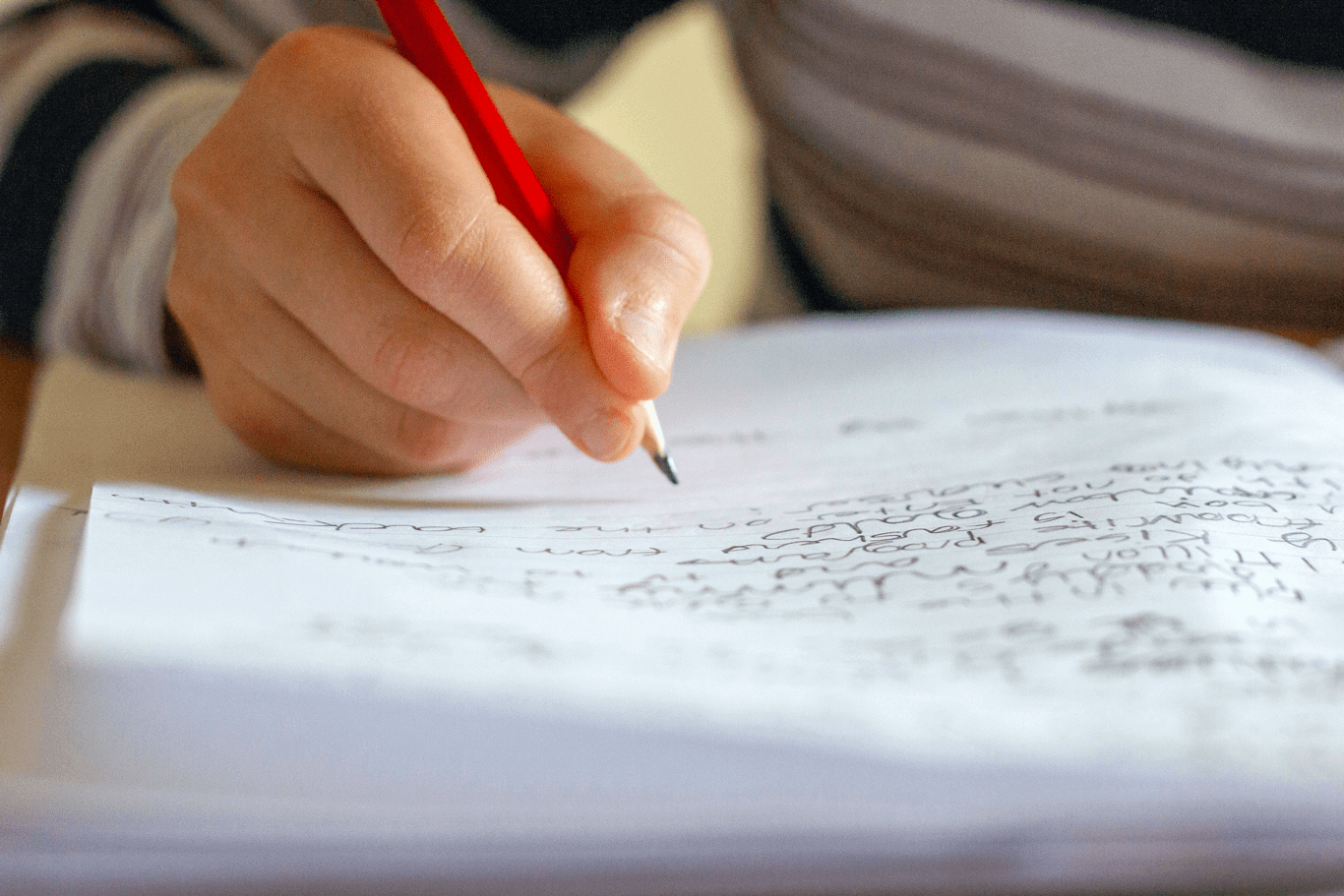One of the most common questions I get from elementary school-aged children is “Do I have to write?”. Writing is one of the most complex academic tasks. It is comprised of a number of skills that must be coordinated to communicate a coherent message to the reader, all of which requires a great deal of effort and patience from novice writers. No wonder young children try to avoid it! If you’ve been following along with this blog series on literacy development, it will come as no surprise to you that children need to be taught how to write. Where do you start? What are the components of learning how to write? How can you encourage your child to attempt writing activities? Here, I will present evidence-based strategies for teaching your child how to write

5 Strategies that Promote Children’s Writing Skills
Writing Strategy #1: Develop Spelling Skills
When children are able to spell easily, they are more likely to engage in the writing process and the quality of their writing improves. So how can you practice spelling aside from spelling drills? Have your child spell the words he/she is learning to read. Whether you use Scrabble tiles or magnetic letters, you can practice putting the letters together to make words with the same spelling pattern. You can also practice making sight words. Then use those words in short sentences so that there are plenty of opportunities to support your child’s memory for those spelling patterns. Just as reading is best taught systematically and explicitly, so is spelling. If you’re not sure where to start at home, there are several resources to help the emerging reader/writer; www.bobsbooks.com and www.starfall.com are two of my favourites.
Writing Strategy #2: Teach Different Word Structures
An understanding of word structures and sentence structures is important to communicate what you mean to say in writing. You can show children that different word structures affect meaning by using those same letter tiles, and adding affixes such as -ing, -ed, -er, -ment, -s/-es to root words. Post these commonly found affixes along with high frequency sight words and spelling patterns in your home, on a “word wall” or near a space created for writing. Similarly, you can teach children that different sentence structures will affect the meaning of a sentence. Use word tiles to create sentences, and practice using different sentence structures to make a statement, ask a question or give a direction.
Writing Strategy #3: Expand Oral Language Skills
Creating a sentence, paragraph or story in writing requires oral language skills. An understanding of word meanings and grammatical structures improves both reading and writing. Focus on expanding your child’s vocabulary by asking “Can you think of another word that means –?” and by using a variety of vocabulary terms in your conversations. Don’t forget to define any words that your child is not familiar with. As your child becomes comfortable with writing simple sentences, challenge your child to add detail by adding an adjective or adverb. When children hear and use more complex forms of language in their everyday conversations, it is easier to transfer that language into print.
Writing Strategy #4: Make Printing Fun
When children are able to spell and handwrite or print easily, they can focus on the meaning of what they want to communicate. So, by encouraging children to practice their transcription skills, whether that is printing, handwriting or typing, you will be reducing some of that complexity and difficulty that is part of the writing process. Creating a grocery list, composing a short note to another family member or a friend, and writing a short story about a fun weekend event are all ways to get your child writing in a fun, natural way.
Writing Strategy #5: Provide Organizational Supports
When children are ready to move beyond spelling single words and short sentences, they need will need help to organize their sentences into paragraphs. Teaching children how to think ahead about what they want to write, how they want to sequence their sentences and how to add detail so that it makes sense and is interesting to an audience is an extremely important step in learning the writing process. Encourage your child to start with a main idea, then brainstorm related ideas. Those ideas can be depicted in the form of a “tree” or a “web”. Then think about how to organize and sequence those related ideas into sentences or paragraphs. Remember that writing is a recursive process, not linear. It requires editing and revising, re-organizing and editing again.
I remember when my son, who was then 6-years-old, turned to me during our bedtime routine of shared reading and said, “Mom, I just don’t think I love reading as much as you do”. I was heartbroken. For some, reading means entering a world of imagination or a pathway towards increased knowledge. For others, it is a task that brings feelings of dread, anxiety, embarrassment, and even anger or irritability. The same can be said of writing. If your child is struggling with learning to read or to write, there are supports available. If you and your child’s teachers have tried the literacy strategies described in this blog series and your child is still having difficulty, it may be time to seek professional advice. A psychoeducational assessment can help you to identify why your child is struggling and provide suggestions for targeted interventions at school and at home to maximize your child’s learning potential.
About Dr. Anita Burhanpurkar
Registered with the College of Psychologists of Ontario (CPO) since 2003, Dr. Anita Burhanpurkar is licensed by the College of Psychologists of Ontario to work with children, adolescents and families. She currently works for the Dufferin-Peel Catholic District School Board in Mississauga and also provides psychological services to children and adolescents through her private practice, Hummingbird Psychology.
